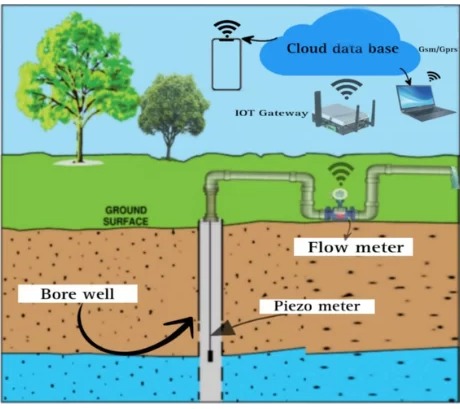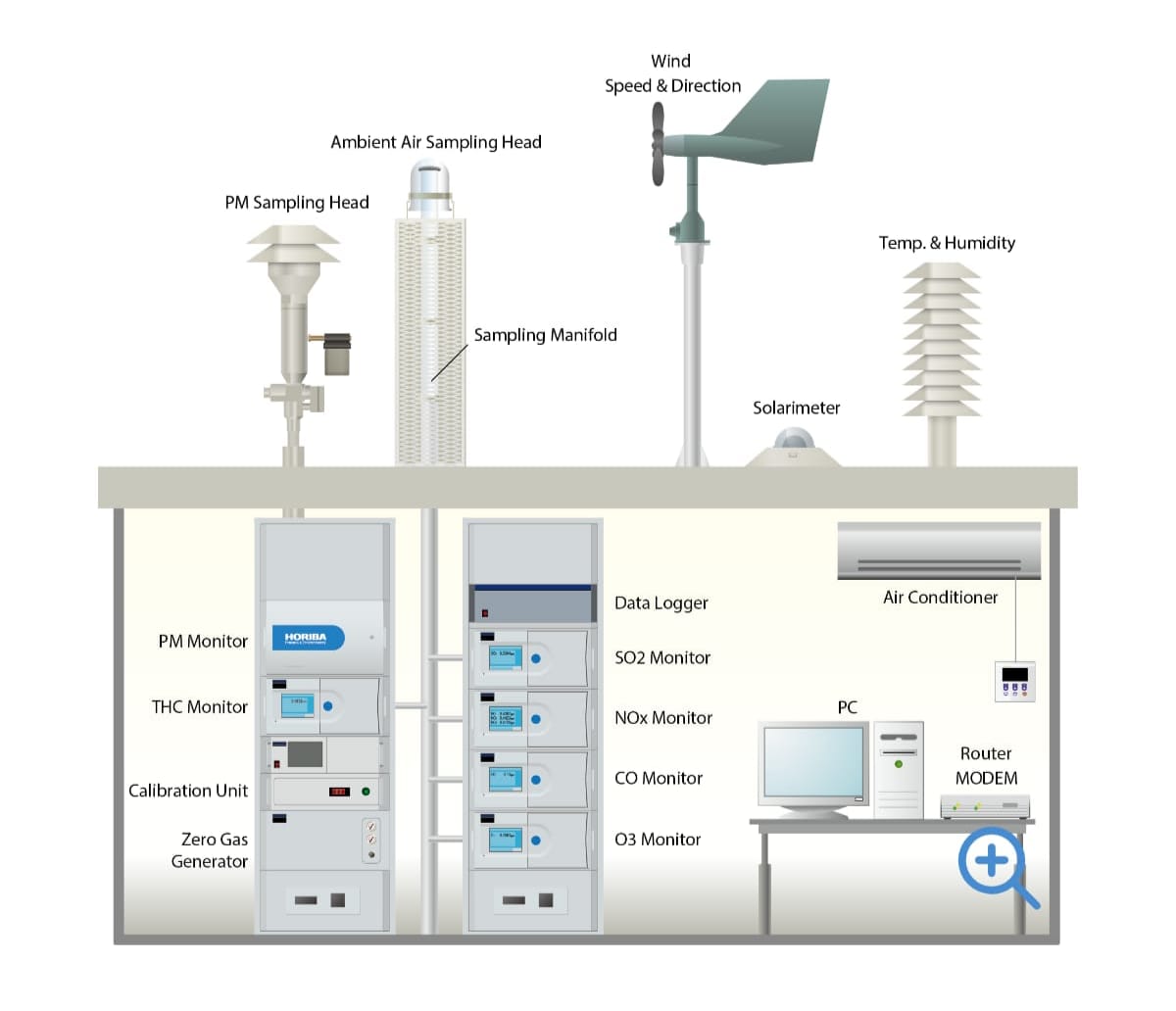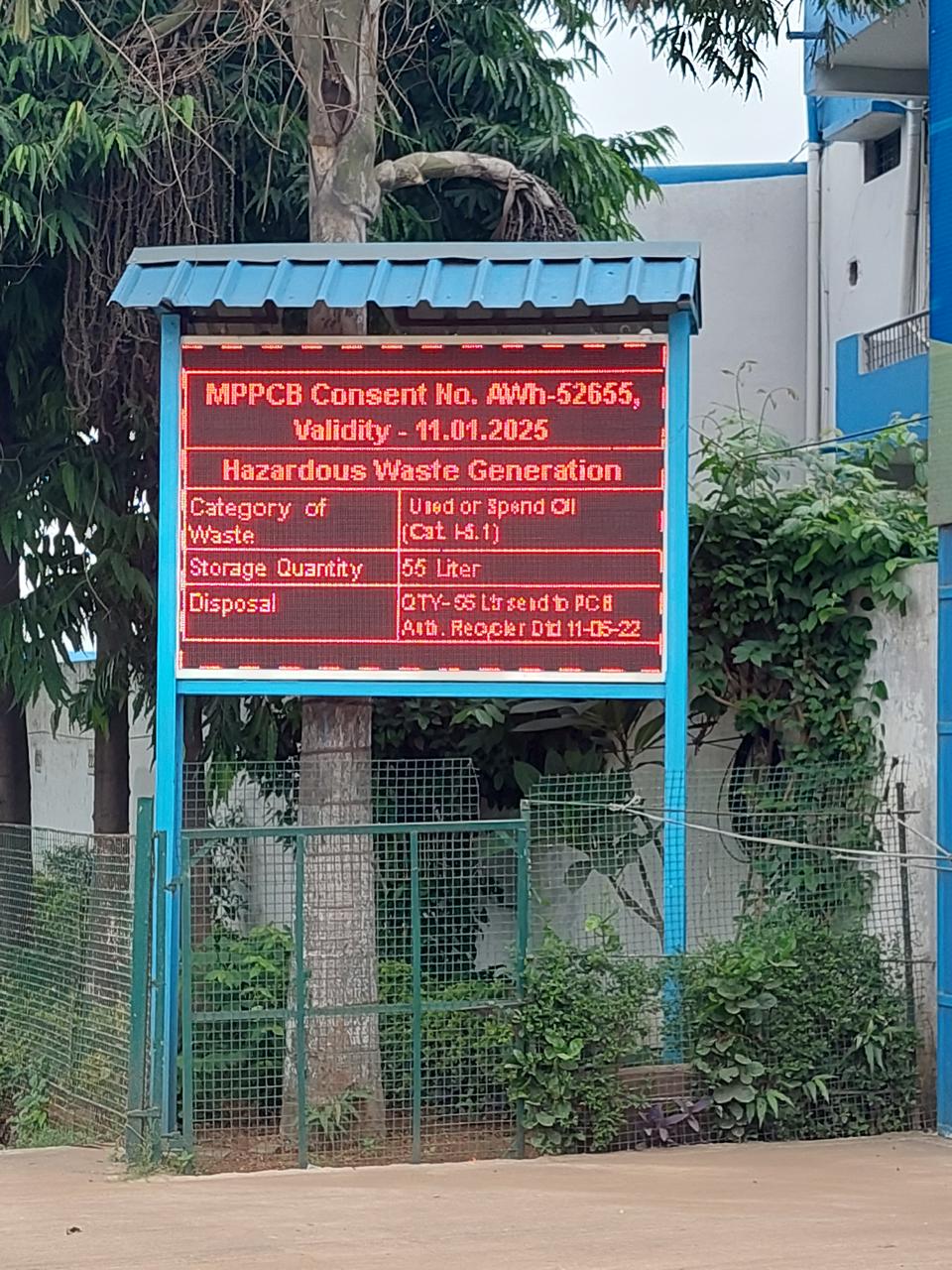.jpg)
Pollution Monitoring
Monitoring Water pollution is a significant environmental concern that affects ecosystems and human health. Monitoring water quality is essential to identify pollutants and prevent contamination. We helps track water quality effectively, ensuring the safety of water sources and compliance with regulatory standards.
Monitoring stacks in industrial settings is crucial for ensuring compliance with air quality regulations and identifying potential environmental hazards. A reliable Stack Online Monitoring System provides real-time data on emissions, enabling timely intervention to prevent pollution and ensure the safety of surrounding communities and ecosystems.
Monitoring ambient air quality is crucial for assessing the level of pollutants in the air and safeguarding public health. An efficient Ambient Air Quality Monitoring System provides real-time data on various air pollutants, helping authorities make informed decisions to mitigate pollution and protect the environment.
Monitoring Bore-Well The parameter to be monitored by the telemetry system is the time stamp, the cumulative volume, the cumulative operating hours of the pump, at a minimum of twice a day. The meter shall be installed at the bore-well pump discharge line before any branching with no bypassing of pipe at the flow meter.

Ground Water Monitoring
Ground Water Monitoring with telemetry system (Piezometer) as per CGWA.
As per the norms of CGWA -CENTRAL GROUND WATER AUTHORITY to monitor, measure, track and data storage of industries that abstracts ground water. We at RG Electrical Services provides complete solution to monitor the ground water abstraction through borewell water extraction, water level, water pressure, water quality, water temperature through our telemetry system and IOT gateway by GSM, GPRS, WIFI and Internet as per the norms of CGWA Guidelines

Ambient Air Quality Monitoring
Ambient air quality monitoring is the systematic assessment of pollutant levels in outdoor air, involving the measurement and analysis of pollutants like particulate matter, gases, and other contaminants to assess air quality and ensure compliance with standards.
What it is: Ambient air monitoring is the process of collecting and analyzing data on the quality of the air outside, including urban, suburban, rural, and industrial areas.
Why it's important:
Public Health: Poor air quality can have serious health impacts, and monitoring helps assess and address these risks.
Environmental Protection: Monitoring helps identify pollution sources and track trends, enabling the development of effective strategies to protect the environment.
Regulatory Compliance: Monitoring data is crucial for determining compliance with air quality standards and regulations.
Research and Modeling: Data from monitoring stations is used to study air quality trends, evaluate the effectiveness of control measures, and improve air quality models.
What is measured:
Criteria Pollutants: Ambient air monitoring focuses on key pollutants, often referred to as "criteria pollutants," including particulate matter (PM10, PM2.5), ground-level ozone, sulfur dioxide, nitrogen dioxide, carbon monoxide, and volatile organic compounds (SOx, NOx, CO).
Other Pollutants: Depending on the specific monitoring goals, other pollutants may also be measured, such as ammonia, lead, benzene, and various heavy metals.
what it's done:
Monitoring Stations: Air quality monitoring stations are strategically placed to collect data from various locations, including urban, suburban, and industrial areas.
Sampling and Analysis: Air samples are collected using specialized equipment, and the collected data is analyzed to determine the concentration of various pollutants.
Data Interpretation: The data is then compared to air quality standards and historical information to assess the current state of the air and identify potential problems.

LED Display Bord as per CPCB Guideline
To comply CPCB guidelines
Industry must install LED display boards at their main gates to publicly display real-time environmental data, including stack emission, effluent, and hazardous waste parameters.
✔️Purpose of the Display Boards
Transparency and Accountability: The CPCB mandates these boards to promote environmental transparency and accountability within the industrial sector.
Public Awareness: By displaying real-time data, the public and stakeholders can access information about the environmental performance of industrial facilities.
Compliance with CPCB Guidelines: The display boards ensure that factories are meeting their environmental obligations and that discharges do not exceed set values.
✔️Key Features of the LED Display Boards:
The boards display real-time data on: Stack emission, Effluent, Hazardous waste, Daily production, Safety statistics etc.
Standard Sizes: 6 feet (L) x 4 feet (H) or 4 feet (L) x 6 feet (H).
Connectivity: The boards can be connected to a computer for data updating, and data can be fetched from an Excel file on the computer.
Software Interface: The boards should have a software interface for easy data management and integration with CPCB/MPCB portals.
Multi-Lingual: The boards should be capable of displaying information in multiple languages.
Outdoor Design: The boards should have a rugged and weather-proof design suitable for outdoor environments.
✔️Why is this important?
Environmental Protection: By making environmental data publicly accessible, the CPCB aims to foster a culture of environmental responsibility and accountability within the industrial sector.
Public Health: Real-time data on emissions and pollution levels can help the public assess the environmental impact of industrial activities and take necessary precautions.
Compliance: The display boards serve as a visual reminder to industries of their environmental obligations and help ensure compliance with CPCB regulations